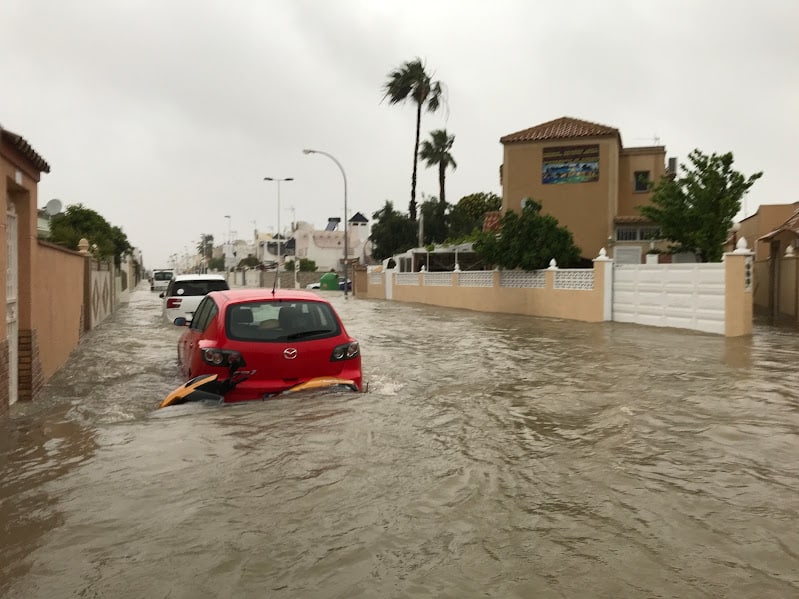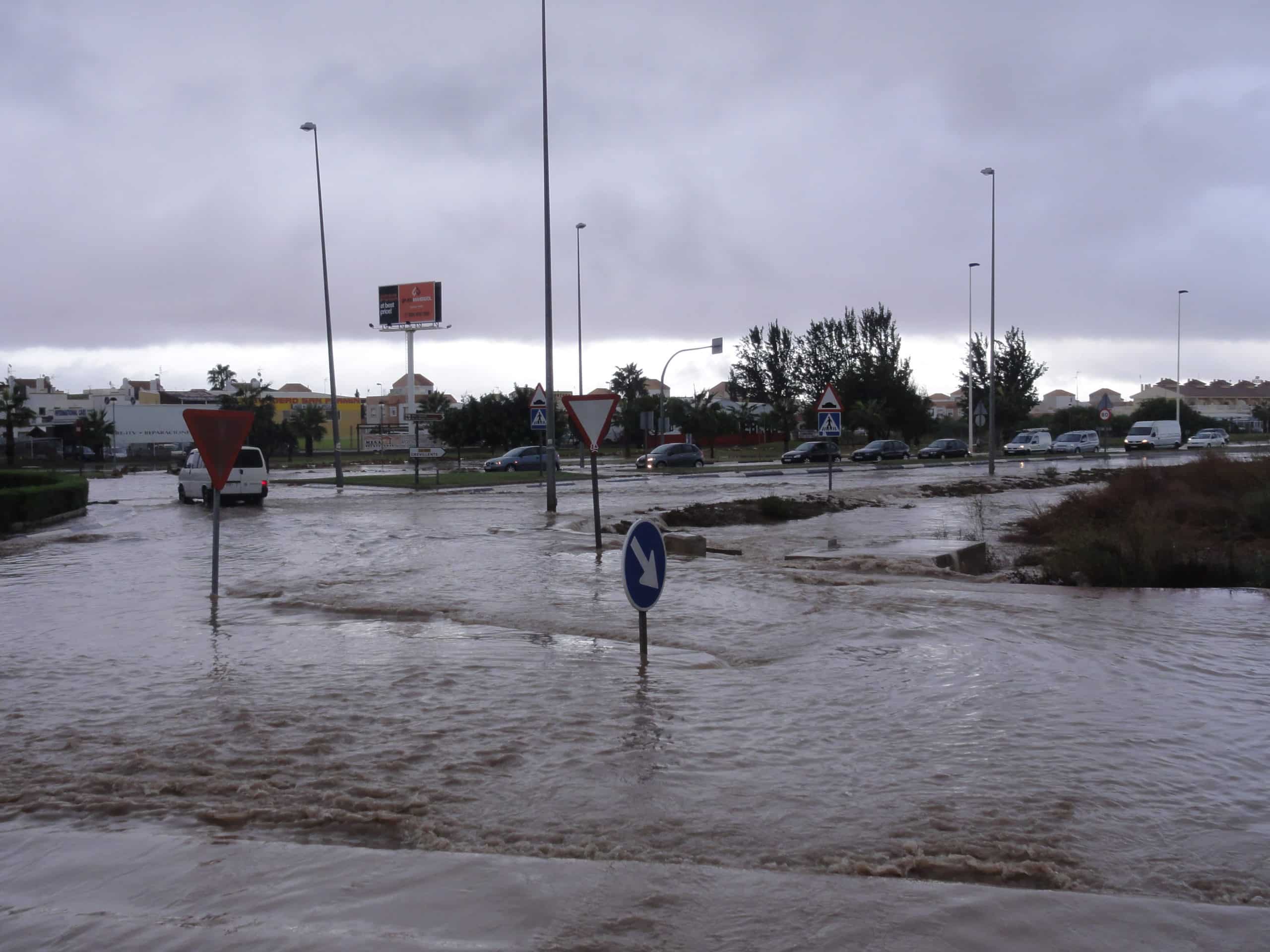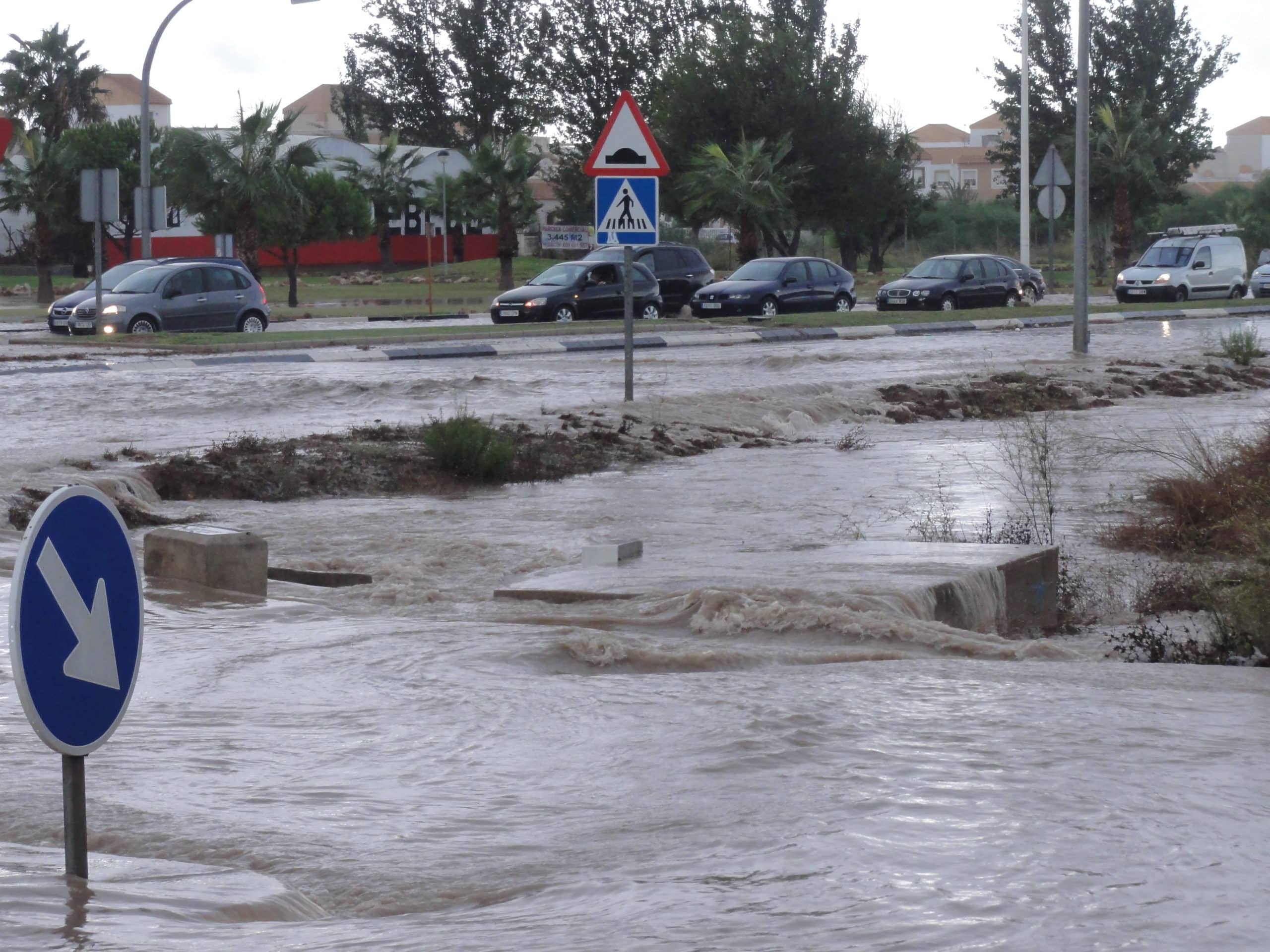Following a political debate at a regional level this week, accusations have been flying around regarding the state of investment in storm water management in Torrevieja.
Although, so far, this year has been unseasonably dry, the risk of flooding is still apparent in many urban zones of the area, including Torrevieja, where residents for many years have had to endure inadequate flood controls, attempts to fix the problem, absolute failures of the resolutions, at great expense, and a continual problem meaning they are unable to sell their houses, and, even worse, despite the apparent improvements for the next literal wave of flooding, a situation that many fear will in fact get worse on account of even more land being built on, thus reducing the floodplain even further.
Although there are many hotspots around Torrevieja, in January a new report highlighted 23 such areas in Torrevieja, and one area prone to flooding in around Jardin Del Mar and Doña Ines, near to Carrefour, in particular along calle Francisco Diez Martinez. It was only a short time ago that it was reported that the new flood pool was nearing completion, at a cost of more than half a million euro, and able to hold 14,000 cubic metres of water, increasing from the 2,000 cubic metre capacity the zone already had, and where, in theory, the water which would normally collect on the aforementioned area will simply relocate to this new pool.
It should also be noted that if the N-332 ever does get widened through Torrevieja, then the land occupied by the new storm pool could well be reduced once again.
Another hotspot in the same area however is the CV-905 road which runs from Torrevieja to Quesada and passes the Jardin Del Mar and Doña Ines urbanisations. If we roll back time almost a decade, work was announced along that road for the creation of another storm drain, covering an area of 35,000 square metres. Since then, the capacity has increased, more storm drains were placed to divert water to both pools, and a lot of money was spent to try to solve the problem, which never actually happened, as properties and streets still flooded.
Jump forward to today, and we do indeed now have the new drainage pool at Doña Ines to test, but one thing that has perhaps gone unnoticed is that as part of the Lagoons Village development at La Hoya, the drainage channel on the Quesada-bound side of the CV-905 has been filled in. So, the question which has not been answered is where is the water that would have gone to that drain expected to go now? Could it be that the water will carve a path to the new storm pool, thus adding to the problem of flooding in the streets already highlighted, or could it be that the people investing in new properties at Lagoons Village, with their promise of private security and a bus to La Mata beach, will very quickly find that they are purchasing properties in an area prone to flooding, worsened by the presence of their property, which nobody has warned them about, rendering their properties unsellable in the same way as those on calle Francisco Diez Martinez?
A part of the political battle, the head of the opposition socialist group in Torrevieja, Barbara Soler, highlighted a video referring to the historic problems of flooding which included the area mentioned, and including Avenida Desiderio Rodríguez, Torreblanca, La Mata, Punta Prima, Avenida de las Cortes Valencianas, downtown area, CV-95 and N-332, and how problems could have been solved two years ago.
Soler also highlighted the problem that the floods in this area are destroying part of our heritage, seriously affecting the production of salt and, consequently, the work of the salt workers, so closely linked to our identity. The PSOE of Torrevieja firmly rejects the sectarian management of the PP, which has not used the subsidies at its disposal because they come from a progressive government, referring to the fact that the previous regional government in Valencia, led by the PSOE, offered funding, but it was declined by the PP in Torrevieja.
In response, and oddly responding from a party level rather than as the local government, the PP in Torrevieja wants to deny the statements made by the regional secretary of the PSOE in Vega Baja, in which he accuses the Government team in the Torrevieja Council of losing investments in storm water management offered by the regional government.
Last year, incidentally, the candidate to lead the PSOE in Torrevieja, Barbara Soler, had already made the same accusation that the PP government team “prefers not to use to the 580,000 euro with which the Generalitat, of a different political party, subsidised a year and a half ago, as the first part of a project to build sustainable urban drainage systems, in order to stop the floods suffered by the municipality”.
The subsidy would be completed up to a total of 1,300,000 euro within the framework of the Vega Renhace Plan, that was launched after the DANA in 2019, and whose objective is “to turn the catastrophe into an occasion to promote a resilient environment that favours the economic and social regeneration of Vega Baja, as well as promote a territorial development, absolutely respectful with the environment, that prepares for future episodes of storms, and that allows a greater structuring of the territory of the Vega Baja with the rest of the Valencian Community.”
Responding to this week’s accusations, according to the PP, the regional secretary of the PSOE is completely unaware of the actions that what the Torrevieja Council has planned within the Renhace Plan is only €600,000, an amount with which the cost of drafting seven projects in the city of Torrevieja, which are already in the drafting process. He seems to be unaware, they say, or he simply states, aware that it is untrue, that what Torrevieja has planned to carry out works within the famous Renhace Plan approved by the PSOE in the government of the Generalitat Valenciana is zero euro, since there is only a budget item for the drafting of projects and not for their execution.
The PP then accuse the regional PSOE of propaganda, as, they say, the reality is that the funds allocated by the Botánic (the colloquial name given to the former regional government) for the town are nothing more than a merely testimonial item, with which not a single one of the necessary works for Torrevieja can be undertaken. They do not, meanwhile, detail how the current regional government now led by the PP might rectify that position in that case.
The PP also points out that the town hall has invested 8.5 million euro in storm water management since 2019 (which is also when they returned to power in Torrevieja), investment which has not improved the situation for many of the residents, and, as mentioned, might in fact get worse.
Finally, the PP of Torrevieja wants to state that the work of the Government Team of the city of Torrevieja is not based on party slogans, nor on ineffective plans such as the Renhace Plan, which they do so by making sure their political affiliation is clear in so much as the information is sent from the PP and not the town hall, and they highlight that is what “has earned us the confidence of the people of Torrevieja again after the municipal elections in May 2023”.







